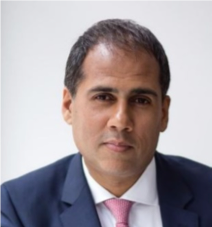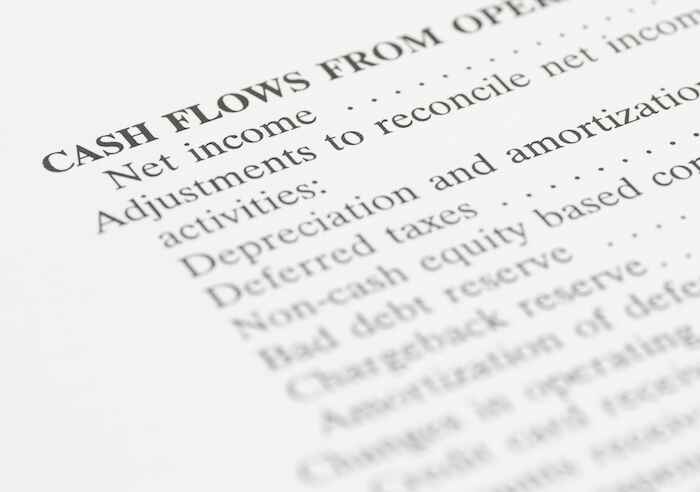My No. 1 Investing Metric for the Biggest Profits
Alpesh Patel|November 12, 2021

Editor’s Note: Oh no… It looks like Alpesh’s HUGE launch of GVI Investor has made Andy a little jealous… or maybe a lot. He’s upping the ante by releasing incredible new research on the white-hot crypto sector. It explains why certain cryptos are generating otherworldly gains right now… the kinds of gains you won’t find anywhere in traditional assets like stocks. You’ve got to see this… Click here.
There are many ways to evaluate a company… valuation, profits, sales, customer growth, dividend payments, insider purchases… and lots more.
But if I had to use only one metric… it would be none of these.
My favorite metric – one used by the biggest money managers, with clients worth $10 million or more – is far more effective. I’m talking about generating 30%-plus annual returns.
So move over, price-to-earnings and dividend yield.
This is the tool all investors need to know about before making investing decisions.
Cash Is King
In broad terms, I’m talking about cash flow.
Obviously, investors should care about cash. If a company doesn’t have enough of it, the lights go out.
But why is cash flow a better metric than both earnings and revenue?
Pulling together its operating, investing and financing cash flows into a net cash flow tells us a lot about a company’s health.
Crucially, unlike profits, cash flows are seen as incredibly difficult to manipulate.
For example, a consumer products company with weak cash flow will have a problem paying suppliers. It will lose customers and be forced to lower its prices as a result, and the stock price will flounder.
All the big banks and investment houses focus on cash flow for their wealthy clients. Indeed, “disciplined and efficient use of free cash flow” is cited by Morgan Stanley as a great way to identify “compounders,” i.e., resilient, durable stocks that return wealth over the long term.
And research by the global asset manager Schroders (which has nearly $1 trillion under management) suggests that because high-quality businesses tend to be “more cash generative,” they can also sustain higher dividend growth and more efficient debt. These qualities persist over the long term, allowing these businesses to grow sustainably.
Unfortunately, measuring cash flow is not as simple as counting cash in the bank.
If you want to do a cash flow analysis, you need a company to generate three cash flow statements. There’s…
- Operating cash flow: Operating cash flow is cash received from customers minus operating expenses like salaries, supplies, rent, etc.
- Investing cash flow: Investing cash flow is cash spent on financial instruments or fixed assets, like stocks or securities in other businesses, machinery, property, etc.
- Financing cash flow: Financing cash flow is composed of funds from owners, creditors and investors. These inputs are classified as either debt, equity or dividend transactions on a cash flow statement.
But I’ve found a far better way to use cash as the No. 1 predictor of a stock’s success…
The Root of Profits
I use a straightforward formula and metric that the titan of all wealth managers – Goldman Sachs – also uses. It’s called CROCI – or cash return on capital invested.
CROCI is a formula for measuring how much cash a company receives on the capital it invests. It’s a measure of the efficiency of a company. It also indicates how much demand the company’s products have. And as cash is the root source of profits, it’s a pure measure of a company.
Goldman’s wealth management division and the “quants” within it showed that companies with a high cash return on capital invested generated an average gain of 30% per year over the long term.
So why is cash flow ignored by most investors? Simple. Earnings and profits sound sexy. They seem obvious. But they are very easy to manipulate. Ask any accountant.
“Cash return on capital invested” may be a mouthful. But it is the clearest signal that your investment will be a good one… and bring you market-trouncing gains.

Alpesh Patel
Alpesh Patel is an award-winning hedge fund and private equity fund manager, international best-selling author, entrepreneur and Dealmaker. He is the Founder and CEO of Praefinium Partners and is a Financial Times Top FTSE 100 forecaster. As a senior-most Dealmaker in the U.K.’s Department for International Trade, he is part of a team that has helped deliver $1 billion of investment to the U.K. since 2005 . He’s also a former Council Member of the 100-year-old Chatham House, the foreign affairs think-tank, whose patron is Queen Elizabeth. For his services to the U.K. economy, Alpesh received the Order of the British Empire (OBE) from the Queen in 2020. As a recognized authority on fintech, online trading and venture capital, his past and current client list includes American Express, Merrill Lynch HSBC, Charles Schwab, Goldman Sachs, Barclays, TD Bank, NYSE Life… and more.





